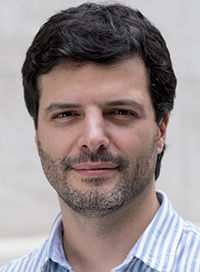3.126 - AMICOR (25)
#Dra. Valderês Antonietta Robinson Achutti (*13/06/1931+15/06/2021)

A legendary virologist coined the term Original Antigenic Sin to reflect his frustration with the body’s bias against the first flu strain it encounters (iStock).
Our immune systems react most strongly to the viral strains we encountered in our childhoods. Scientists call this original antigenic sin (OAS)—the body’s first blush with a virus like influenza or COVID being the “original sin” that forever biases its immune response against newer strains. According to the OAS theory, no matter how many flu vaccines or COVID boosters we receive, our bodies would stubbornly insist on churning out tired antibodies against a bygone strain of a virus.
Today's 5-year-olds will likely live to 100.
For children in wealthier nations, 80 will be the new 60. That means a life filled with day-to-day technological advances—and a new way of thinking about school, work, and retirement.
Five-year-old Peggy Hawkins wants to be a penguin when she grows up. Even at her young age she concedes it’s unlikely, but being pragmatic she has backups, including dancer. Her playful visions of the future reflect the enthusiasm and unconstrained imagination of this cheerful British girl, and while she won’t become a penguin, something almost as confounding is a near certainty: Peggy Hawkins will live to 100.
According to demographers, today’s five-year-olds have a better chance than ever of living to be centenarians, and by 2050 it’ll likely be the norm for newborns in wealthier nations, such as the United States, Europe, or parts of Asia. That longevity means Peggy, and others of her generation, will live lives that are not just longer, but fundamentally different than the lives of their parents and grandparents.
“What worries us about living long is getting old,” says Andrew Scott, a London School of Business economics professor and co-author of The 100-Year Life. Yet Scott reckons fears of a “Silver Tsunami,” with overburdened young workers toiling to keep their decrepit parents in pensions and adult diapers gets it all wrong. “People are living for longer, on average they’re healthier for longer. It’s amazing how we turn this into bad news.”
A century of medical advances already has extended life expectancy, while improving education, growing prosperity, and greater female choice are reducing fertility rates. The world population reached nine billion in November, but the growth rate is slowing with numbers expected to peak mid-century and then start to reduce. Meanwhile, the proportion of over-65s is already one in 10 and set to reach one in four in the US by 2050. A less populated world, inhabited by older people is on the horizon./.../
Jorge Kalil: "Precisamos de mais vocações na Ciência brasileira"
1925 THE ARCTIC
Recomendado pela AMICOR Maria Inês Reinert Azambuja que tem parte importante
no desenvolvimento mundial dessa linha de pesquisa científica.
Autoimmune features of atherosclerosis
to myocardial infarction, stroke, and other disorders causing large numbers of deaths
in humans. Atherosclerosis had been traditionally viewed as a lipid disorder, and
inflammation is known to play a major role as well, but now Depuydt et al. have
identified a potential autoimmune aspect to it. Through detailed analysis of T cells
and their interactions with macrophages in the atherosclerotic plaques and blood of
human patients, the authors identified T cells with an autoimmune phenotype, which
may indicate additional directions for future treatment approaches.
| ||||||||||||||||||
| ||||||||||||||||||
|
 Paul Berg, the Nobel Prize-winning biochemist whose ground-breaking experiments in gene-splicing reshaped cancer research and helped spawn the multibillion-dollar biotechnology industry, has died at his home on the Stanford University campus. He was 96.
Paul Berg, the Nobel Prize-winning biochemist whose ground-breaking experiments in gene-splicing reshaped cancer research and helped spawn the multibillion-dollar biotechnology industry, has died at his home on the Stanford University campus. He was 96.| READ MORE |
 |
|














No comments:
Post a Comment